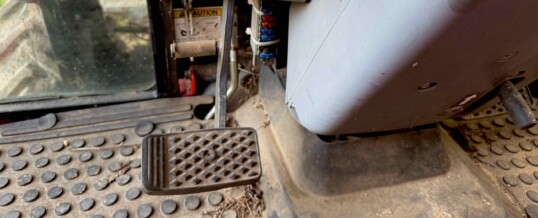
One of the necessities of my youth is now one of your best bets to prevent vehicle theft: a stick shift.
I watch a lot of YouTube, and particularly a lot of videos of police chases and crime being foiled.
It would seem that today’s youth can easily be stopped from stealing your vehicle or carjacking you if your truck or car has a standard transmission.
There are several videos online of kids trying to commit grand theft auto. They hop in all excited, but slowly walk away when they realize there’s a clutch and gears involved.
The first car I drove and owned had a standard transmission. Most of my friends had a stick shift in their cars and trucks.
Four-on-the-floor and three-on-the-tree were common.
Not anymore.
According to Kelley Blue Book, in 2023, just 1.7 vehicles of all cars and trucks sold (not quite two vehicles out of every 100) came with a standard transmission.
I’m not sure how many cars and trucks had a stick shift in the 1960s, but in Ashdown, Arkansas, where I grew up, it seemed as if most of them did.
My first experience with driving was my dad’s 1966 Ford Mustang. I’d spent the night with a buddy who lived out in the country and my father came to pick me up.
On the way home, he pulled over and told me to get into the driver’s seat. The Mustang had a six-cylinder engine and a three-speed transmission with a shifter on the floor.
Dad gave me instructions on how to use the clutch, but suffice it to say, I killed the engine a couple of times before I got the hang of it. But I did get the hang of it.
I had to if I was going to learn to drive.
Before my dad had the Mustang, he had a 1963 Ford Falcon. It was a three-speed with the shifter on the column. Before that he had a 1952 Chevrolet stepside pickup. It had a three speed on the column.
My buddy Scotty had a Volkswagen Beetle. It also was a standard, but was a four-speed on the floor.
Just about everyone had a standard transmission. An automatic was an option, but it was an expensive option.
Most of the time, it was the moms who had an automatic. The moms needed larger vehicles to haul kids, the kids’ stuff, and groceries. And larger vehicles were easier to drive with an automatic.
Most vehicles from 50 years ago didn’t have power steering, so turning the wheel of 4,000 or 5,000 pounds of rolling Detroit steel wasn’t easy if you were also trying to shift gears. So, an automatic transmission was very appealing. Especially if your mom drove a Buick deuce-and-a-quarter.
But as the 60s turned into the 70s, car manufacturers began offering an automatic transmission as part of the base package.
This is when the decline in Americans’ ability to drive a standard began.
Lots of farm equipment still requires a driver to know how to operate a stick shift. My tractor has three speeds and four gears in each one, giving it 12 speeds. All of which requiring a clutch to change the gear.
Had I not learned on a stick in that Mustang, I’d have had to learn it later if I wanted to drive the tractor.
I’m really no different than most Americans. I eventually moved over to cars and trucks with an automatic. The last vehicle I owned with a standard transmission was a 1982 Toyota Starlet. The only car I ever bought right off the showroom floor.
Ronald Reagan was in his first term when I had that car.
There are still reasons to still own a car with a standard transmission. Usually, a car with a stick shift is more fuel-efficient, provided you drive sensibly. And obviously, a stick is now a built-in anti-theft device. But those reasons are no longer enough to convince people to drive a car with a stick.
There are many vehicles I wish I still had, standard transmissions included. My dad’s ‘52 Chevy truck (a five-window) and his ‘66 Mustang, which became my first car.
Doesn’t really matter whether a car has an automatic or a stick these days. Some of the new cars can drive themselves.
For kicks, I may order one with a standard just to see how many times the invisible driver kills the engine before he gets me to where I need to go.
©2025 John Moore
John’s books, Puns for Groan People and Write of Passage: A Southerner’s View of Then and Now Vol. 1 and Vol. 2, are available on his website TheCountryWriter.com, where you can also send him a message.
JUN
2025
